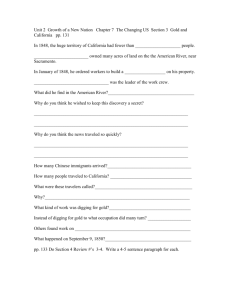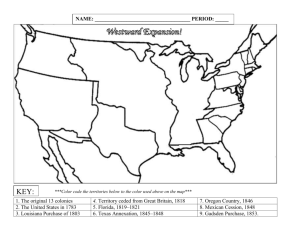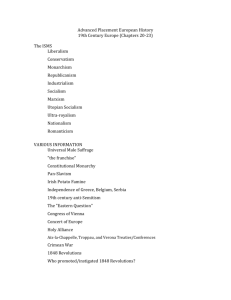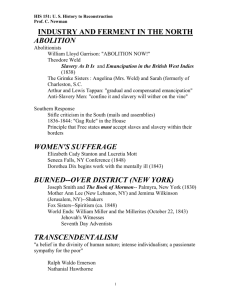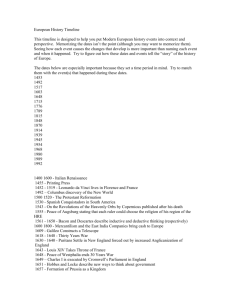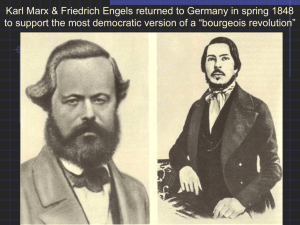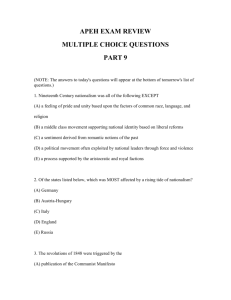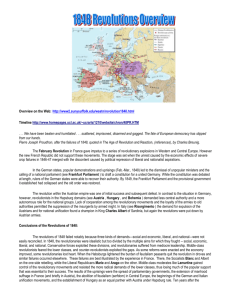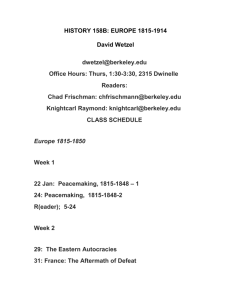The Revolutions of 1848
advertisement
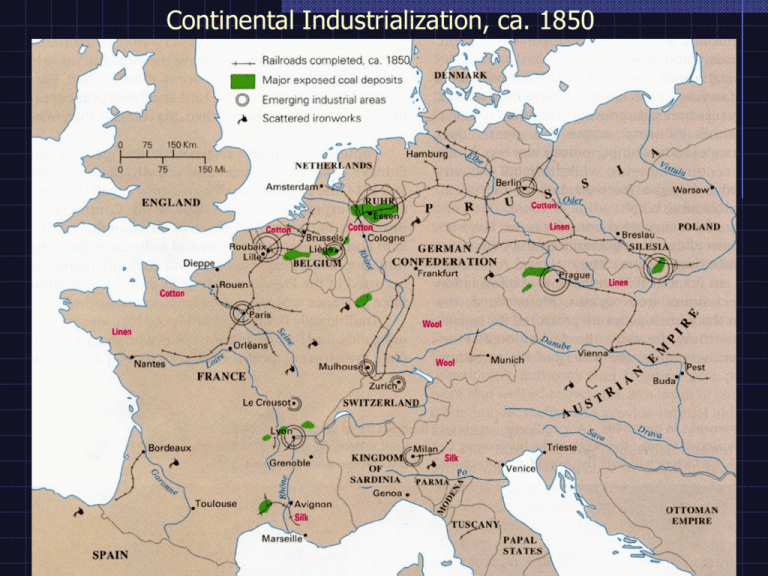
Continental Industrialization, ca. 1850 “The Seizure” (1847): Bad harvests spread hardship among family farmers throughout Europe in the 1840s K. W. Hübner, “The Silesian Weavers,” 1844: Merchants slash the price offered weavers for their linen “Hunger and Despair” “Government Assistance” (Satirical leaflet, early 1848) The spread of popular uprisings in 1848 Feb 22: Paris Feb 27: Baden Mar 13: Vienna Mar 15: Budapest Mar 18: Berlin Mar 18: Milan Mar 19: Munich May 3: Dresden June 9: Bucharest Artisans, not factory workers, predominated in the street fighting. “Lamartine before City Hall, 25 February 1848.” The Paris crowd proclaimed a “Second Republic,” led by a Romantic poet and the socialist Louis Blanc. But rural voters elected a conservative legislature in April. Frédéric Sorrieu, “The Triumph of the Universal, Democratic, and Social Republic: The Pact” “Street Fighting on Rue Soufflot, Paris, June 25, 1848” (3,000 Parisians died in the June Days, vs. 500 in February) The dissolution of the National Workshops in June 1848 provoked desperation in working-class neighborhoods: Daumier, “The Uprising” “The Barricade” (June 1848) Louis Napoleon (1808-1873) won 75% of the vote in the presidential election of December 1848 and then gained control of the army and police Louis Napoleon seized power in December 1851 and drove 100,000 republicans into exile: Daumier, “The Fugitives” Protesters clash with cavalry, Vienna, March 13, 1848 “The Fall of Metternich, 13 March 1848” Berliners celebrate on the barricades on the evening of March 18, 1848 (royal palace in background) Ceremonial opening of the “National Assembly” in St. Paul’s Church, Frankfurt a.M., May 18, 1848, elected to write a federal constitution for Germany Karl Marx & Friedrich Engels returned to Germany to support its “bourgeois revolution” and organize workers Austrian Imperial Troops reconquer Vienna, October 1848: Nationality divided revolutionaries in the Habsburg realm. In Berlin (as in Paris), fighting broke out when the new government terminated an expensive program to give jobs to the unemployed In November 1848 the Berlin National Guard agreed to allow the Prussian army to reoccupy the city Prussian troops advance against the revolutionary army of Baden (including Friedrich Engels), June 22, 1849 France, Prussia, & Austria sweep the revolutionaries out of Europe (1849) CONSEQUENCES OF THE REVOLUTIONS OF 1848 1. Austria and Prussia adopt written constitutions, with 2. 3. 4. 5. limited suffrage and strong powers for the monarch. In the “Second Empire” (1851-1870), Napoleon III combines authoritarian rule with the quest to promote industrialization and gain prestige in foreign policy. Movements for national self-determination spread among the Czechs, Poles, Magyars, Croats, and Italians. Gradual reforms help Great Britain to avoid any mass uprising, except in Ireland. An economic boom in the 1850s and expansion of police forces reduce popular unrest.
